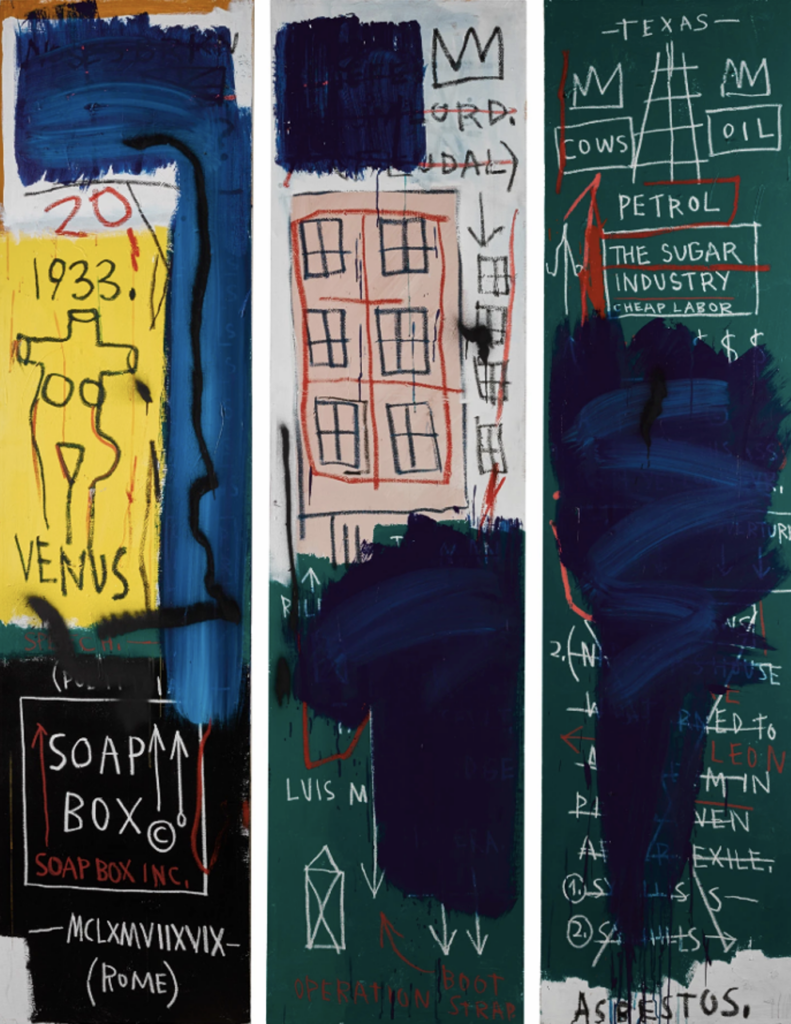
Emmanuel Perrotin runs a fancy art gallery in Paris.
Expensive art isn’t exactly a mass-market product. So to increase his revenues, he also sells things like prints and books.
Still, I was surprised to learn that someone had offered to buy his business. And it’s not just anyone. It’s a big private equity (PE) investor.
PE investors generally do buyouts of companies in huge industries — housing, for example, or hospital networks. They take control of a business, restructure it, and then try to resell it for a profit.
Why would a PE investor buy an art gallery?
Today, I’ll explain what’s going on here…
Tell you why it could lead to a 2x or even 10x profit opportunity…
And then show you how to get in on the action.
Perrotin’s Business
Emmanuel Perrotin is a 55-year-old French entrepreneur.
He founded his namesake gallery in Paris in 1990, and he now has outposts in ten cities across the world, including Hong Kong, New York, Tokyo, and Dubai.
His business represents major contemporary artists such as Sophia Calle, Takashi Murakami, and Maurizio Cattelan.
Here’s Perrotin underneath one of the artworks he represented:

His business currently brings in about $150 million in sales per year, and it’s profitable, with no debt.
But now it might be poised to get much bigger…
A Private Equity Player Sees a 10-Bagger
You see, Perrotin is in the process of selling a 60% stake in his gallery to Colony Investment Management (Colony IM), a French private equity business that manages more than $3 billion in assets.
But why would a huge PE investor buy an art gallery?
The answer is actually simple. It’s the same reason a PE investor would get involved in any industry: big potential profits.
As noted on artnet.com, it’s likely Colony invested because it believes “Perrotin can at least double in annual sales revenue, if not go 10X.”
But it’s not just that Colony believes it can make Perrotin’s business better, or bigger, or more profitable.
It also believes the art market is in a huge cyclical upswing that will last for years. In fact, as an executive from Colony has explained, “We are convinced that contemporary art represents a highly promising asset class for the future.”
The thing is, Colony isn’t the only major investor that believes this…
The Greatest Store of Wealth
In volatile and scary markets like we're experiencing today, the wealthy have always found ways to protect and grow their wealth.
For example, they invest in luxury apartments in New York or London, or in bars of gold.
But recently, they've been turning to something new: art.
The CEO of BlackRock, the world's largest asset manager, is a big believer in art as an asset class.
In fact, he calls art "one of the greatest stores of international wealth."
BlackRock has about $10 trillion in assets under management, so when its CEO makes a claim, it certainly pays to listen.
Three Reasons the Wealthy Invest in Art
There are many reasons that art can be such a powerful investment.
For starters, it provides diversification. So even if the stock market keeps crashing like it's been doing recently, art can keep growing in value.
Furthermore, art offers a hedge against inflation. In inflationary times like we're in today, that's a valuable trick.
But perhaps most important of all, art can provide market-beating returns.
For example, since 1995, one popular art index has outperformed the broad-based S&P 500 by nearly 3x.
Perhaps these benefits help explain why, according to the Knight Frank Global Wealth Report, 37% of individuals worth at least $30 million collect or own fine art.
But now, art isn't just for the super-wealthy anymore, or for billion-dollar private equity investors like Colony or BlackRock…
Introducing: Masterworks
Masterworks is an online platform for art investment.
It aims to make blue-chip artwork investable for everyone.
The way it does so is through fractional investments. For example, even if a piece of art is selling for millions of dollars, you can buy a small fraction of it.
In many cases, minimums are just $100, and sometimes they’re as low as just $20.
Furthermore, you can sell your fractional shares to other investors through Masterworks’ secondary market. Certainly, there are no guarantees that someone will buy your shares. But as the platform grows in popularity, it’s likely that liquidity will grow.
As they say, past performance is no guarantee for future results. That said, Masterworks has a track record of winning performance. For example:
- A painting it offered by George Condo earned an annualized net return of 21.5%.
- A painting it offered by Cecily Brown earned an annualized net return of 27.4%.
- And a painting it offered by Banksy earned an annualized net return of 32%.
It’s recently offered pieces by Basquiat:

Yayoi Kusama:

And Keith Haring:

Get Started Today
As noted earlier, with Masterworks, you don’t need millions of dollars to get started. You can often invest with as little as $20.
But keep in mind, all the typical caveats about investing apply here:
For example, don't invest more than you can afford to lose; invest in what you know; and be sure to dip your toe into the water before diving in.
Furthermore, despite Masterworks' secondary market, its art may not be entirely liquid. That means these investments can't necessarily be converted into cash at the snap of your fingers.
So don't invest your rent or grocery money here.
But if you're looking to invest like the rich — and like big Private Equity investors like Colony and BlackRock— Masterworks can be a great place to start.
Happy Investing
Please note: Crowdability has no relationship with any of the startups or investment platforms we write about. We're an independent provider of education and research on startups and alternative investments.
Best Regards,
Founder
Crowdability.com
- SEO Powered Content & PR Distribution. Get Amplified Today.
- PlatoData.Network Vertical Generative Ai. Empower Yourself. Access Here.
- PlatoAiStream. Web3 Intelligence. Knowledge Amplified. Access Here.
- PlatoESG. Carbon, CleanTech, Energy, Environment, Solar, Waste Management. Access Here.
- PlatoHealth. Biotech and Clinical Trials Intelligence. Access Here.
- Source: https://crowdability.com/article/the-asset-class-for-the-future-do-you-own-it
- :has
- :is
- :not
- ][p
- $3
- 1995
- 23
- 27
- 28
- 49
- 50
- 500
- 678
- a
- About
- According
- across
- Action
- actually
- against
- aims
- All
- also
- alternative
- alternative investments
- always
- am
- an
- and
- annual
- annualized
- answer
- any
- anymore
- anyone
- apartments
- Apply
- ARE
- Art
- Artists
- artwork
- artworks
- AS
- asset
- asset class
- Assets
- At
- Banksy
- bars
- BE
- because
- been
- before
- believer
- believes
- benefits
- BEST
- Better
- Big
- bigger
- Billion
- BlackRock
- blue-chip
- Books
- Brings
- broad-based
- brown
- business
- but
- buy
- Buyouts
- by
- Calls
- CAN
- cases
- Cash
- ceo
- certainly
- Cities
- claim
- class
- collect
- Colony
- COM
- Companies
- contemporary
- control
- converted
- convinced
- could
- Crashing
- Crowdfunding
- Currently
- Cyclical
- Debt
- Despite
- Dip
- diversification
- diving
- do
- does
- doing
- dollars
- don
- Dont
- double
- Dubai
- Earlier
- earned
- Education
- entirely
- Entrepreneur
- equity
- Even
- everyone
- exactly
- example
- executive
- experiencing
- Explain
- explained
- fact
- fancy
- fine
- Fine Art
- For
- found
- Founded
- fraction
- fractional
- frank
- French
- from
- future
- Gallery
- generally
- George
- get
- Global
- Go
- going
- Gold
- great
- greatest
- grocery
- Grow
- Growing
- Grows
- guarantee
- guarantees
- had
- Have
- he
- hedge
- help
- here
- his
- Hong
- Hong Kong
- Hospital
- housing
- How
- How To
- HTTPS
- huge
- i
- I’LL
- if
- important
- in
- Including
- Increase
- independent
- index
- individuals
- industries
- industry
- inflation
- Inflationary
- International
- into
- Invest
- invested
- investing
- investment
- Investments
- investor
- Investors
- involved
- isn
- IT
- ITS
- jpg
- just
- Keep
- keith
- Knight
- Know
- Kong
- Kusama
- largest
- Last
- lead
- LEARN
- least
- left
- like
- likely
- Liquid
- Liquidity
- little
- London
- looking
- lose
- Low
- Luxury
- major
- make
- MAKES
- management
- manager
- manages
- many
- Market
- Markets
- May..
- means
- might
- million
- millions
- mind
- money
- more
- most
- much
- nearly
- necessarily
- Need
- net
- networks
- New
- New York
- no
- note
- noted
- now
- of
- offered
- Offers
- often
- on
- ONE
- online
- only
- or
- Other
- outperformed
- own
- P&E
- painting
- paris
- past
- pays
- per
- performance
- perhaps
- piece
- pieces
- Place
- platform
- Platforms
- plato
- Plato Data Intelligence
- PlatoData
- player
- poised
- Popular
- popularity
- potential
- powerful
- prints
- private
- Private Equity
- process
- Product
- Profit
- profitable
- profits
- promising
- protect
- provide
- provider
- provides
- RE
- reason
- reasons
- recently
- record
- regards
- relationship
- Rent
- report
- represented
- represents
- research
- resell
- restructure
- Results
- return
- returns
- revenue
- revenues
- Rich
- runs
- s
- S&P
- S&P 500
- Said
- sales
- sales revenue
- same
- say
- secondary
- Secondary Market
- see
- sees
- sell
- Selling
- Sells
- Shares
- show
- signature
- Simple
- since
- small
- Snap
- So
- Someone
- something
- sometimes
- sophia
- stake
- start
- started
- starters
- Startups
- stock
- stock market
- store
- stores
- such
- sure
- surprised
- T
- Take
- ten
- than
- that
- The
- The Future
- the world
- their
- then
- There.
- These
- they
- thing
- things
- Through
- times
- to
- today
- tokyo
- track
- trick
- Trillion
- try
- Turning
- typical
- under
- underneath
- Valuable
- value
- Ve
- volatile
- was
- Water
- Way..
- ways
- we
- Wealth
- wealthy
- What
- when
- why
- will
- winning
- with
- world
- worth
- would
- write
- year
- years
- york
- you
- Your
- zephyrnet




